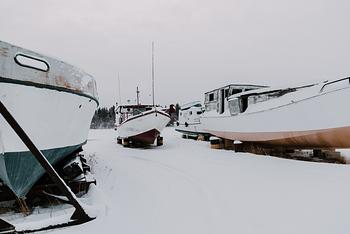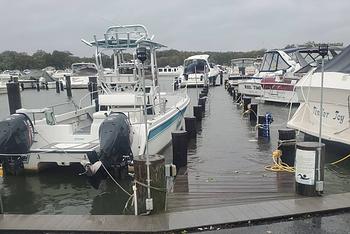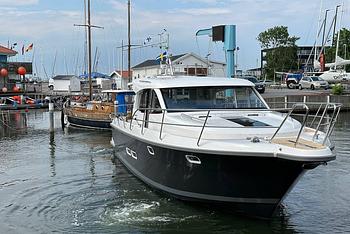The best thing about a trailer boat is being able to haul it around and explore new waters, but in order to do so, you’ll first have to learn how to launch your boat from a trailer. And naturally, you’ll want to do it safely, smoothly, and quickly. Commit these 10 steps to memory and then go get some real-world practice, and the next time you back down that ramp you’ll look like a pro.
1. Prep Your Rig for Safe Travel
Step one in launching your boat is getting it to the ramp in the first place, so do a safety check before hitting the road and make sure the bow and stern are both sufficiently secured, your trailer lights are plugged in and working, and the hitch, safety chains, and emergency brake line (if your rig has one) are all properly attached. Allow for extra braking distance when you’re on the road and try to minimize abrupt starts and stops that could stress the tie-downs and attachment points.

Step number one is getting your boat to the launch ramp safely and securely. Always do a full safety check before you hit the road.
2. Master Trailer Handling in a Safe Space
Practice trailering and especially backing before you try to launch. For your first few outings, instead of trailering to the launch ramp, head for an empty parking lot. Then set out some traffic cones (orange life jackets will work in a pinch) to outline a “ramp.” Pull your boat forward and then back it through the markers several times from different angles. This will allow you to experience how the tow vehicle and trailer interact in a stress-free environment without a bunch of gawkers watching as you try to back down the ramp.
3. Pre-launch Preparation Etiquette
When you’re ready for the real thing and you arrive at the launch, pull out of the way of the entrance and the ramp to prep the boat. This process will take five or 10 minutes, and it’s considered good etiquette to do the prep while you’re out of everyone else’s way. Park right in front of the ramp while you get ready and someone’s likely to start honking their horn at you.
To prep the boat for launch, remove the transom strap(s), put your dock lines on the cleats, put in the drain plug (PUT IN THE DRAIN PLUG!), and load up all your coolers and gear from the tow vehicle. Note: You’ll be tempted to put that stuff directly into the boat when you leave your house, but this is a bad move. Gear gets jostled around quite a bit in a boat being trailered down the road and it’s not uncommon to find things broken, spilled, or missing entirely if you leave them in the boat for the ride.
At this point do not remove the bow attachment points. You’ve probably seen videos or pictures of boats sitting on concrete boat ramps, and prematurely releasing the bow is often how these disasters happen.
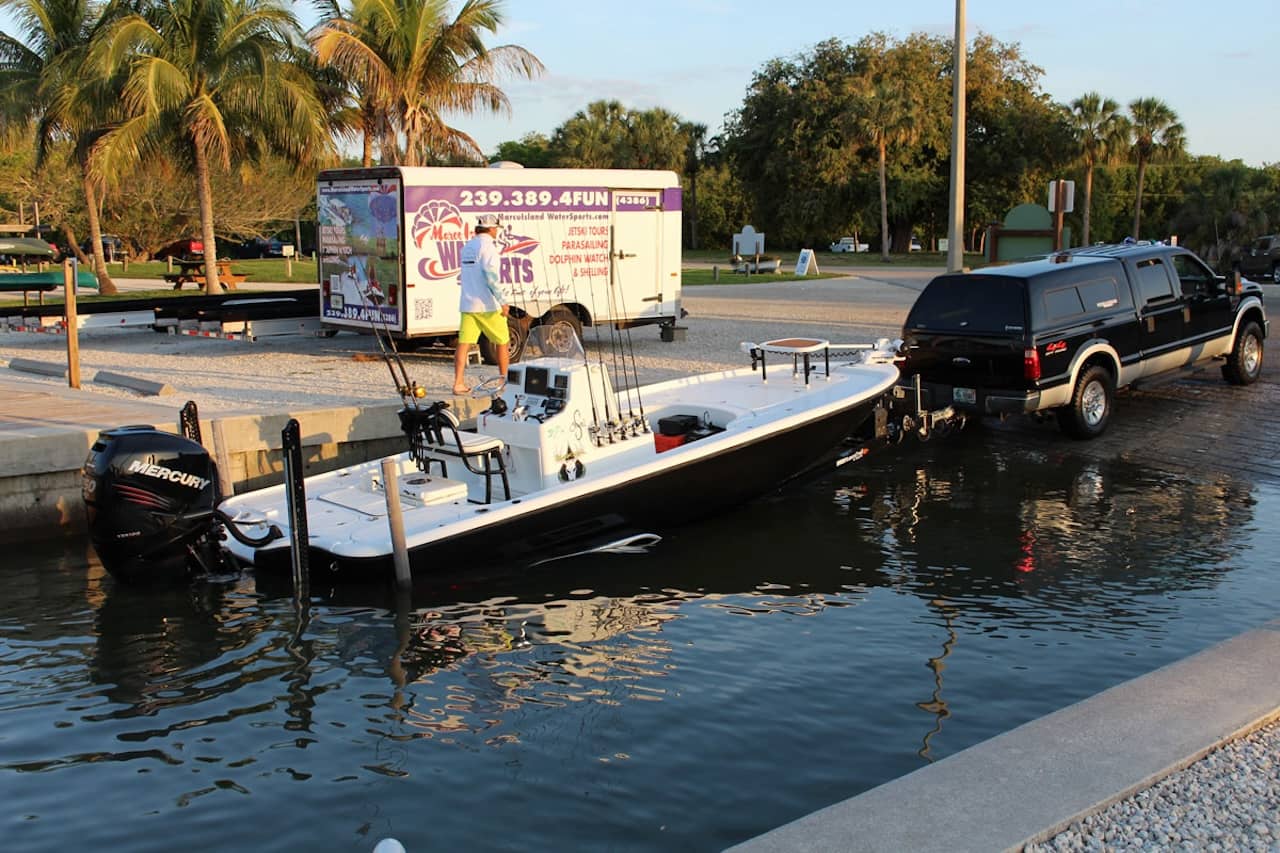
Where you’ll want to stop will vary by different boat ramps, different rigs, and tide level. That said, you want most but not all of the boat floating.
4. Positioning for Easy Backing Up
Pull into position to back the trailer and boat down the ramp. How you position yourself will determine whether you can back down more or less straight (which is relatively easy) or if you’ll have to turn the trailer while backing up to get it aligned (which is a lot harder). So, make it easy on yourself. Loop down close to the ramp then pull up and away from it until the tow vehicle and boat are lined up straight or you’ve pulled up as far as you can to get them as close to straight as possible.
5. Manage Trailer Lights for Safety
If your trailer has lights with incandescent bulbs, shift into park, apply the parking brake, walk to the back of your vehicle, and pull out the trailer plug. Otherwise, when you back the trailer lights into the water and press the brake pedal, the cool water can cause the heated bulbs to burst. (If your trailer has LED lights this isn’t a problem, and you can skip this step).

When the boat reaches the water have your assistant grab the mooring line(s).
6. Execute a Smooth Ramp Backing
Now it’s time to back down the ramp. Hopefully that practice will pay off and you can smoothly roll down the ramp in reverse. Try to go backwards as straight as possible while making small course corrections, and if the boat starts to slew off in one direction or the other too much to recover, pull forward and try again.
When the back of the trailer reaches the water, an assistant should grab the mooring lines. Continue backing slowly until the back of the boat first begins to float, at which point you or your assistant can undo the bow strap and safety chain from the bow eye. Then you can continue backing until the front of the trailer is coming close to the water’s edge, if necessary, to get more of the boat floating.
Just where you’ll want to stop depends to a large degree on your specific rig, the angle of the ramp, and in areas with a tidal swing, the height of the water. Every ramp and every boat will be a little different. As a rule of thumb It’s generally best to have most but not all of the boat floating freely. That way it will stay put until you’re ready to pull it off the trailer, but will do so easily when the time comes.
7. Secure Trailer and Apply Safety Measures
Shift into park and apply the parking brake. Never fail to apply the parking brake—we’re sure you’ve seen those videos of trucks rolling down the ramp and into the water, too. For an extra measure of safety, also slide a chock behind one of the wheels.
Now we’re ready to pull the boat off the trailer. Maybe. If the water is deep enough to sufficiently float the boat without getting the tow vehicle wet you can position your helper standing on the dock, ready to give a tug on the mooring lines and pull it over to the dock.

Have your helper move the boat down the pier and well away from the ramp, so others can use it while you park.
8. Options for Getting the Boat Off the Trailer
What about that “maybe”? Often, you’ll be unable to back down far enough to float the boat off. In this case you’ll need to board the boat, start the motor, and back it off the trailer. If you’ve backed close to the dock your helper may be able to step aboard, or on most rigs you can step on the trailer tongue and board at the bow. Or, if your helper is a seasoned boater, you may want him or her to get aboard before backing the boat into the water, and have them ready to pull the boat off. Ensure the outdrive is tilted far enough down so the water intakes are completely submerged and start the engine. Then shift into reverse while applying just enough power to pull the boat off the trailer, and bring it alongside the dock.
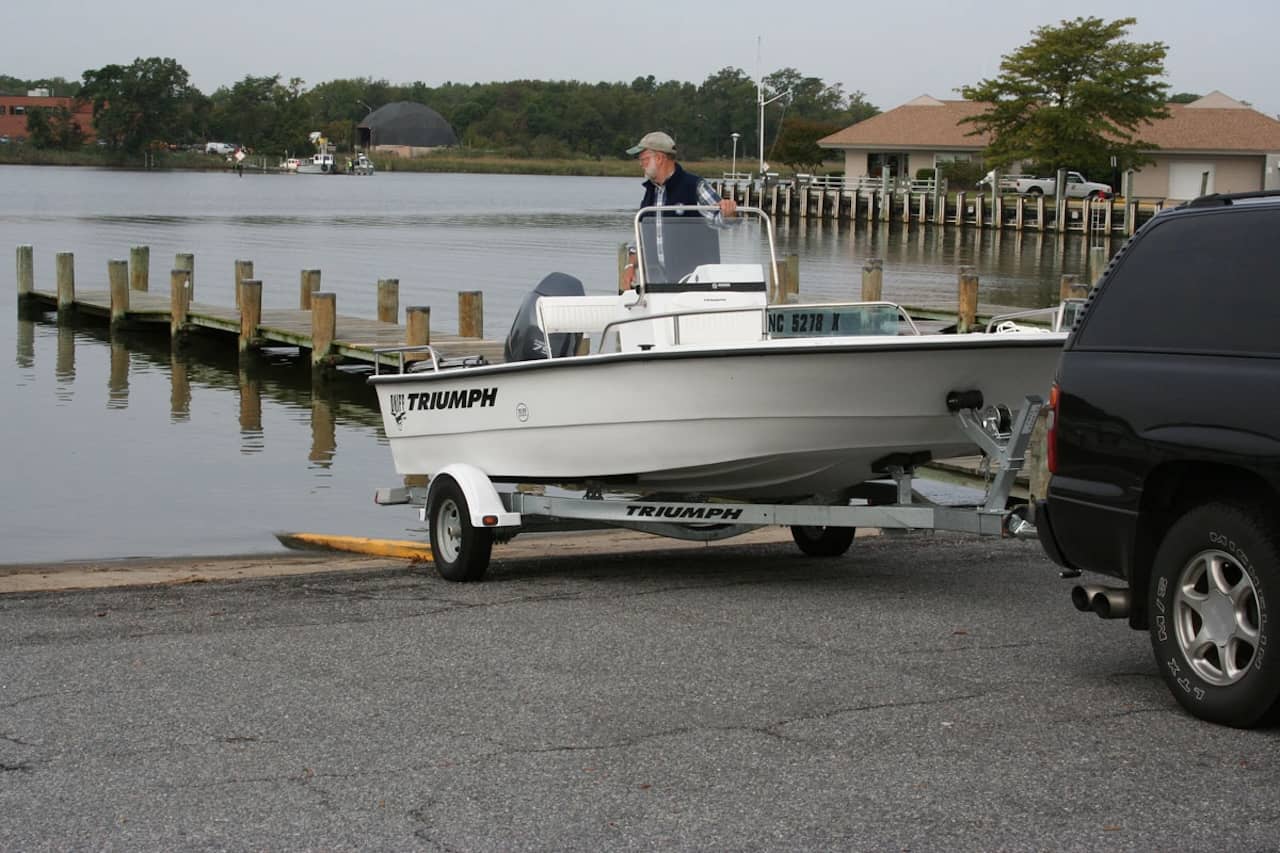
If your helper is a seasoned boater, you may want to have them board prior to launch and have them back the boat off the trailer under power.
9. Secure the Boat and Clear the Ramp
With the boat at the dock and secured or under the care of your helper, you’re ready to get back into the truck and park it. As you do so, if there’s a line at the ramp or others waiting to launch or retrieve, your helper should pull the boat as far down the dock as possible, move it to the outside of the dock, or move it to a “courtesy pier” if one is present. This allows other people to get their day started without having to wait for you to park your tow vehicle, walk back, and pull the boat away. If you’re launching single-handed you should move the boat out of the way of others before parking your tow vehicle.
10. Launch and Enjoy Your Boating Adventure!
Jump aboard, and get ready for a day of awesome fun aboard your boat!
Check out our guides:
Best Trailerable Sailboat Brands to Cruise or Race
Best Trailerable Trawler Brands: Pocket Cruisers to Go Anywhere
How to Transport Your Boat Four Different Ways

